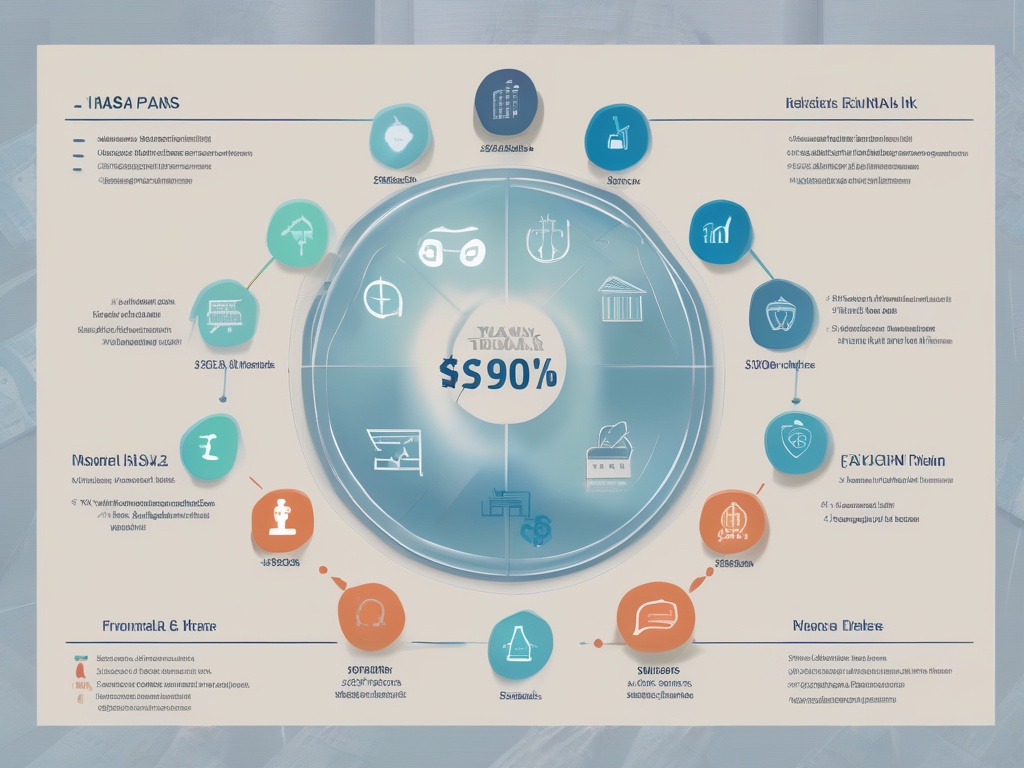
Unlock Hidden Wealth: The Untapped Power of Tax-Advantaged Accounts
In the realm of personal finance, few tools hold the transformative potential of tax-advantaged accounts. Yet, many investors and savers overlook these powerful vehicles, missing out on opportunities to accelerate wealth accumulation while minimizing tax burdens. Imagine unlocking a hidden vault where your money grows more efficiently, allowing your future to flourish with less interference from Uncle Sam. This article explores the often underused strategies and accounts that can dramatically reshape your financial trajectory.
Maximizing Your Growth Potential with Underutilized Accounts
While retirement accounts like 401(k)s and Traditional IRAs are well-known, there exists a spectrum of less obvious yet equally potent options. Health Savings Accounts (HSAs), for instance, serve not only as a tool for medical expenses but also as a tax-free investment vehicle. Contributions are tax-deductible, grow tax-free, and withdrawals for qualified health expenses are tax-free—making HSAs a triple threat. Similarly, Roth IRAs provide a unique advantage: contributions are made with after-tax dollars, but withdrawals during retirement are completely tax-free, offering unparalleled flexibility and growth potential. For those seeking to diversify their tax strategy, 529 College Savings Plans can be a game-changer, especially with state tax benefits and the ability to grow investments tax-free when used for qualified education expenses.
Strategic Use and Long-Term Benefits of Hidden Accounts
Understanding the strategic application of these accounts is crucial. Contributing to an HSA not only reduces your current taxable income but also provides a long-term investment opportunity that can be used for non-medical expenses after age 65 without penalties—a feature often overlooked. Meanwhile, leveraging Roth IRAs allows your investments to compound without the drag of taxes over decades, significantly increasing your nest egg. The key lies in early and consistent contributions, maximizing employer matches where applicable, and understanding the nuances of each account’s rules. These accounts are not just tax shelters; they are powerful tools for wealth building when used strategically over time. By integrating them into your financial plan, you unlock a realm of potential that can elevate your wealth to new heights and secure your financial future in ways you never thought possible.
Secret Financial Strategies: Maximizing Growth with Underused Tax Breaks
Unlocking Hidden Opportunities for Accelerated Wealth
Many high-net-worth individuals and savvy investors remain unaware of the full potential embedded within lesser-known tax-advantaged accounts. While popular options like 401(k)s and Roth IRAs dominate conversations, there exists a spectrum of underutilized vehicles that can significantly amplify your financial growth. These secret strategies often go unnoticed due to lack of awareness or misconceptions about their benefits, yet they hold the power to transform your savings trajectory when leveraged correctly. By adopting innovative approaches to these accounts, you can unlock a vault of untapped financial potential, ensuring that every dollar works harder for your future.
Harnessing the Power of Lesser-Known Tax-Advantaged Accounts
One of the most compelling, yet underused, options is the Health Savings Account (HSA). Not only does it offer triple tax advantages, but smart contributors can also use it as a long-term growth vehicle. Unlike traditional retirement accounts, the HSA allows for tax-free growth even after the age of 65, providing a flexible resource for non-medical expenses without penalties. Moreover, many overlook the Flexible Spending Account (FSA), which, although more restrictive, can be strategically used to lower taxable income and cover essential medical costs, ultimately freeing up funds to be redirected into investment accounts. Combining these tools with strategic planning can dramatically boost your overall tax efficiency.
Another often underestimated account is the 529 College Savings Plan. Beyond its primary purpose of funding education, some states offer generous tax deductions or credits for contributions, making it a powerful vehicle for family wealth transfer. When used in conjunction with other savings strategies, the 529 plan can serve as a versatile component of your long-term wealth-building arsenal. By understanding and exploiting these lesser-known accounts, you gain a significant edge over those relying solely on mainstream options.
Transform Your Retirement Planning: Discover Lesser-Known Tax-Advantaged Vehicles
Unlocking the Hidden Power of Flexible Retirement Strategies
While many investors rely heavily on traditional vehicles like 401(k)s and Roth IRAs, the landscape of tax-advantaged accounts is far more expansive and versatile than commonly believed. Innovative options like the Health Savings Account (HSA) and 529 College Savings Plans are often overlooked in long-term retirement strategies, yet they possess unique features that can significantly enhance your financial security. For instance, HSAs not only provide immediate tax savings but also serve as a potent growth tool that can be harnessed well into retirement, especially when used for non-medical expenses after age 65. Similarly, 529 plans, primarily aimed at funding higher education, double as estate planning tools when leveraged with state tax benefits, enabling you to transfer wealth efficiently across generations. Integrating these lesser-known accounts into your retirement blueprint allows for a more diversified, tax-efficient approach that maximizes your wealth accumulation potential while safeguarding your future from unexpected financial hurdles.
Strategic utilization of these accounts requires a nuanced understanding of their rules and benefits. Contributions to HSAs, for example, are tax-deductible, and the account’s funds grow tax-free, making it a powerful tool for long-term wealth building. When paired with the flexibility of withdrawing funds for non-medical reasons after 65 without penalties, it becomes an invaluable asset for retirement planning. Meanwhile, 529 plans can be customized to fit various state-specific incentives, offering not just tax advantages but also an effective way to transfer assets without incurring estate taxes. The key is to view these accounts as complementary rather than standalone, crafting a retirement strategy that benefits from their combined advantages.
